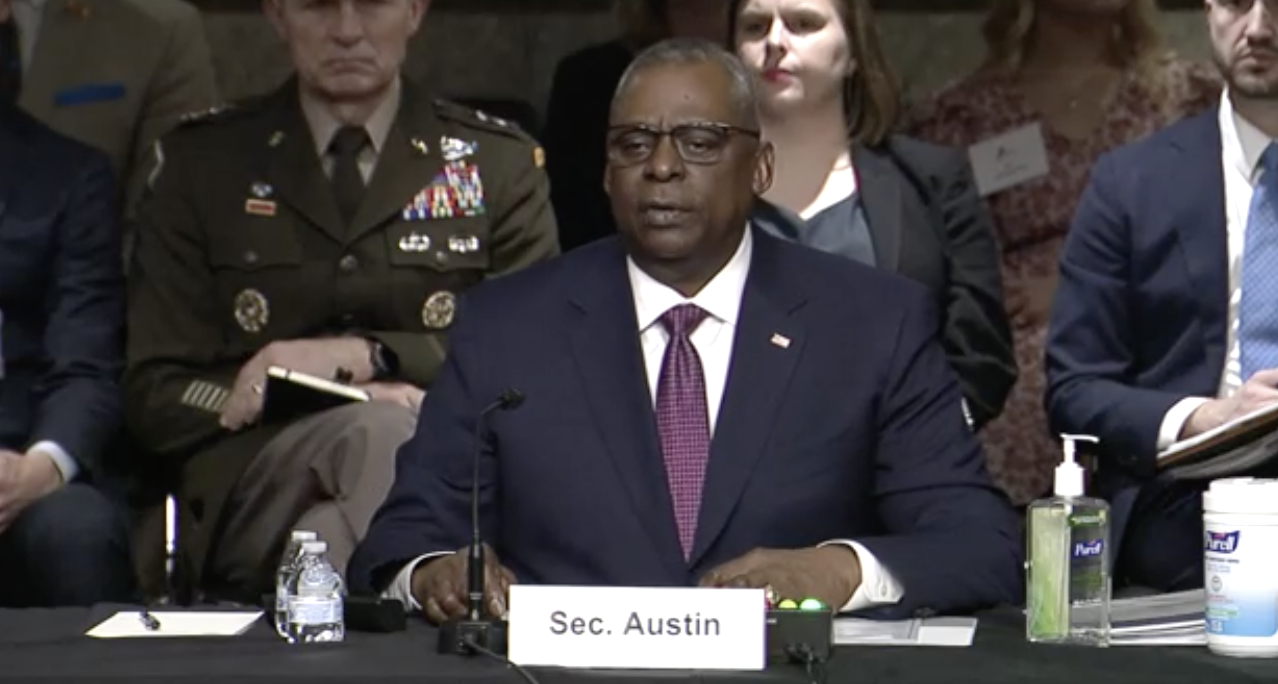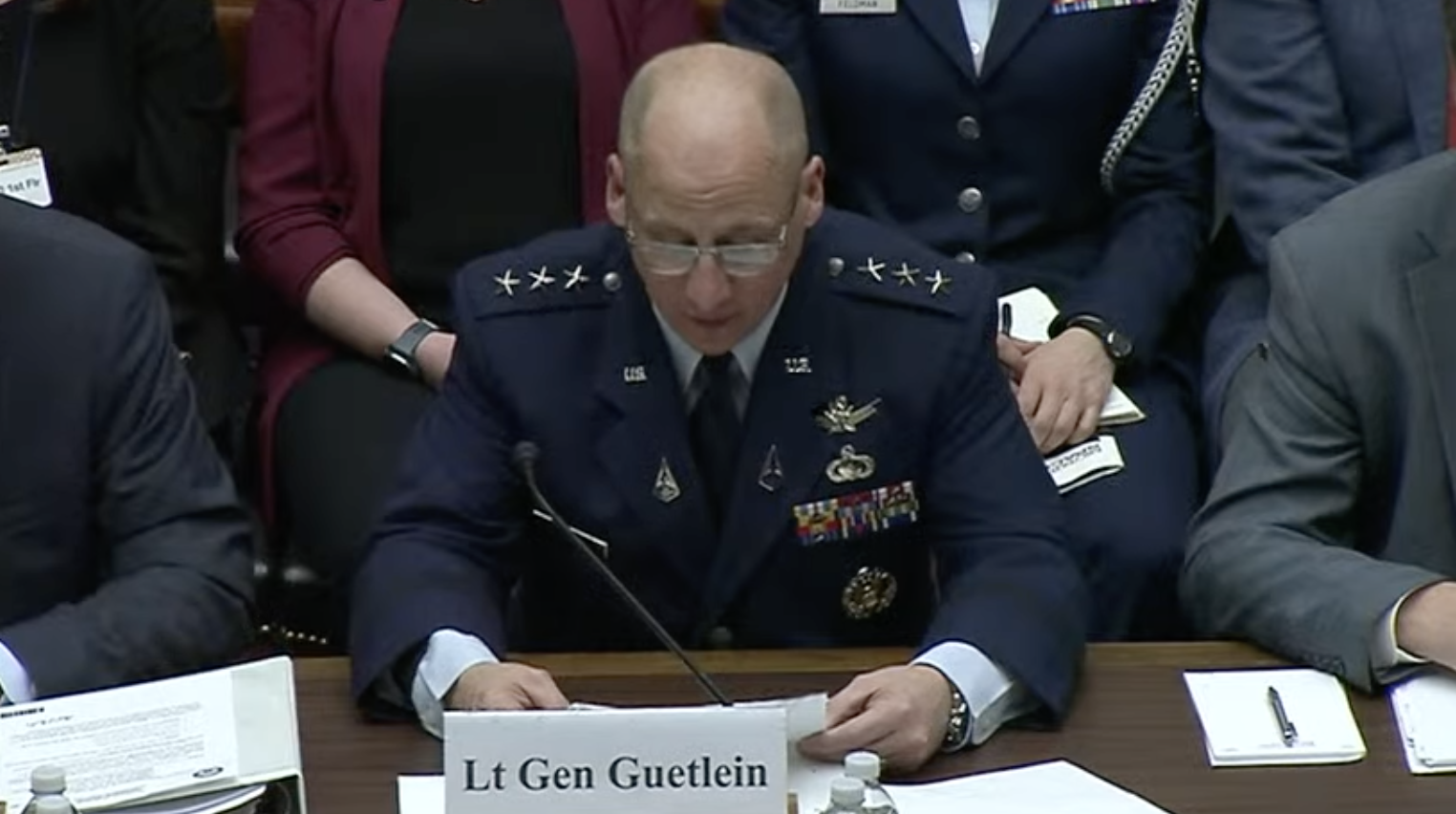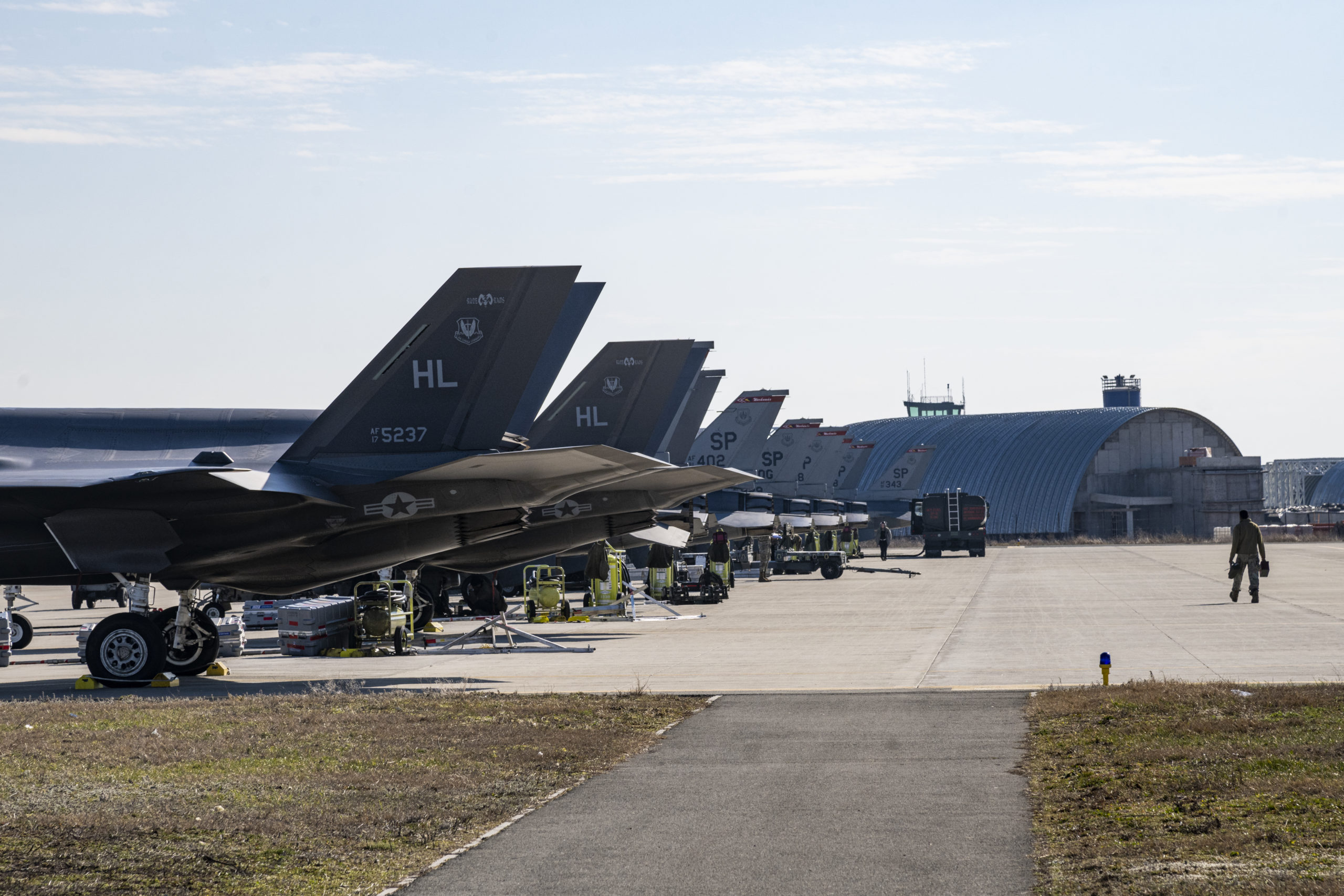The Air Force may be planning to divest 1,468 aircraft over its future years defense plan while buying just 467, for net reduction of more than 1,000 aircraft, Sen. Deb Fischer (R-Neb.) said during an April 7 Senate Armed Services Committee budget hearing.
Questioning Defense Secretary Lloyd J. Austin III on the fiscal 2023 budget request, Fischer said, “Under this budget, the Air Force is divesting 369 aircraft this year and buying 87, which is a net loss of 282. The five-year plan projects buying 467 aircraft, and divesting 1,468, a loss of 1,001.”
Fischer’s numbers for fiscal year 2023 don’t match the ones the Air Force disclosed as part of its topline budget rollout, in which it said it would retire 150 aircraft, hand over 100 MQ-9 remotely piloted aircraft to another agency, and buy 82 new airplanes, for a net reduction of 170 aircraft. In the fiscal 2022 enacted budget, USAF was permitted to divest 159 airplanes.
The Air Force declined to comment on the discrepancy, saying only that the more detailed “J-books,” which provide programmatic line items, will be released later this month. Traditionally, the J-Books have been provided at the time of the budget rollout, but they were not provided with the budget last year or this year.
During the hearing, Fischer asked Austin if he expects operational demands to fall commensurate with those reductions.
Austin replied that the DOD is “investing in those capabilities that will enable us to be decisive in the future fight. And those capabilities that are not survivable in that fight, I think we have to divest of them.” He added that the platforms slated for retirement are “very expensive to maintain. We can use those resources to invest in future capabilities, the kind that we need for the next fight. And so, that’s our strategy.”
Gen. Mark A. Milley, Chairman of the Joint Chiefs, said the majority of divestitures affect the Air Force and Navy, and “the cost benefit analysis to sustain them over time doesn’t add up … We are trying to modernize the force for the future operating environment, 2030 and beyond.”
The Pentagon is “investing to be decisive in a future fight,” Austin said.
That figure of 1,000 aircraft divested would be consistent with the roughly 200 a year the Air Force has asked to retire in the last several budgets.
Neither Austin nor Milley indicated any reduction in the need for U.S. forces, however, and acknowledged there will be “some risk” in the near-term of gapping those capabilities.
Fischer said that while she’s “open to divesting legacy platforms,” she said it is creating undue stresses on the remaining forces.
Fischer complained to Austin that the Pentagon’s top strategy documents—the National Security Strategy, National Defense Strategy, Nuclear Posture Review, and Missile Defense Review—were all only submitted to Congress last week, and in classified form, leaving little time for Congress to study them and develop meaningful “opportunity for debate.” She also complained that the J-Books will not be provided until mid-April.
“I think having this hearing without any detailed information about the budget, when we are unable to discuss any of the Administration’s strategy documents, directly undermines the committee’s ability to conduct its oversight work,” Fischer said.
Austin replied that unclassified versions of the strategy documents will come out soon, saying the strategy will closely follow the interim NDS released last year.
“Resources are matched to strategy, matched to policy, matched to the will of the people,” Austin said.
Fischer also said she’s determined to reduce secrecy, saying the amount of defense information that is secret has increased markedly, and “we are going backwards in terms of classifying these documents.” This is “contrary to the spirit of transparency,” she said.
Buying Modernization
Austin pointed out that the budget contains “$56 billion for airborne platforms and systems” and pays for ongoing modernization of the strategic nuclear deterrent.
Although a sea-launched tactical nuclear missile was deleted from the budget, Milley said he disagreed with that action, noting his preference is to “present as many options as possible” to the national command authority.
Undersecretary of Defense Michael J. McCord said that $20 billion of this year’s budget is “catch up” to account for inflation, which rose steeply last year, “so we wouldn’t be behind” in the current fiscal year.
Austin and Milley said they are re-evaluating U.S. European posture, both indicating that in the wake of Russia’s invasion of Ukraine, a greater U.S. presence is needed, although neither indicated how many additional forces would be required. Some of this will involve a greater presence in the vicinity of the Black Sea, Austin said.
“We will change our footprint” in the area, Austin said. “We’ll need more going forward … How much remains to be seen.”
Austin said the latest developments in Ukraine indicate that Russia has encountered greater resistance than expected.
“Putin has given up on his efforts to capture the capital city” of Kiev, and “he is now focused on the South and East of the country. And our goal is to get the Ukrainians everything they need, that we can possibly get to them, as fast as we can get it to them, … so that they can be successful in that fight … And that will be our focus going forward.”
Asked what “winning” looks like for the U.S. in Ukraine, Milley said, “Winning is: Ukraine remains a free and independent nation … as it has been since 1991, with their territorial integrity intact. That’s going to be very difficult and it’s going to be a long slog; this is not an easy fight that they’re involved in.”
The Ukrainians have “defeated that first Russian onslaught” around Kiev, “but there is a significant battle ahead, down in the Southeast,” Milley said. It’s a part of the country more flat and open, where armored vehicles are likely to play a larger role, and Milley and Austin said discussions are underway with allies and partners to provide Ukraine with more of such vehicles.










